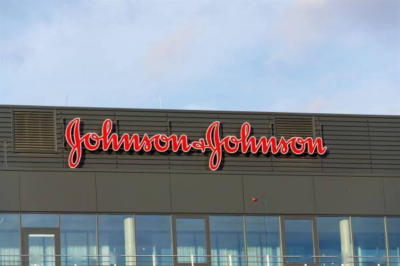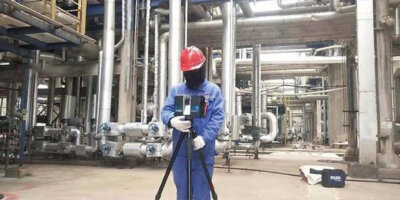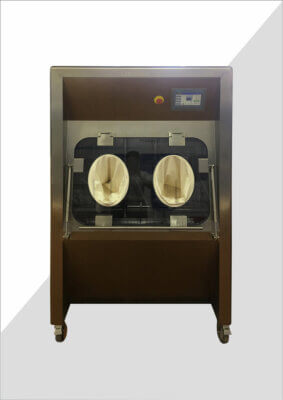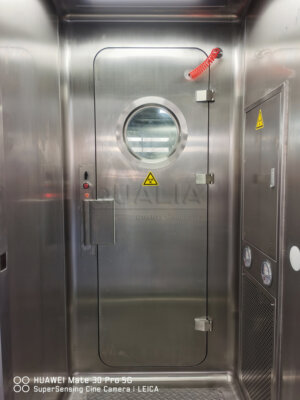In the pharmaceutical manufacturing industry, the proper handling and treatment of waste streams is paramount to protecting both public health and the environment. Effluent decontamination plays a crucial role in this process, ensuring that potentially hazardous substances are neutralized before being released into water systems. As regulations tighten and public awareness grows, pharmaceutical companies are increasingly focused on implementing effective effluent decontamination strategies.
This article will explore the key principles of effluent decontamination in pharmaceutical manufacturing, including the latest technologies, regulatory requirements, and best practices. We'll examine the various methods used to treat contaminated wastewater, the challenges faced by manufacturers, and the importance of continuous monitoring and improvement in decontamination processes.
As we delve into this critical aspect of pharmaceutical production, we'll consider how effluent decontamination fits into the broader context of sustainable manufacturing and environmental stewardship. From thermal inactivation to chemical treatments, we'll uncover the science behind these processes and how they contribute to safer, more responsible pharmaceutical production.
Effective effluent decontamination is essential for maintaining environmental integrity and public safety in pharmaceutical manufacturing.
Table: Overview of Effluent Decontamination Methods in Pharmaceutical Manufacturing
| Method | Principle | Advantages | Limitations |
|---|---|---|---|
| Thermal Inactivation | Heat treatment to destroy microorganisms | Highly effective, no chemical residues | Energy-intensive, potential for heat-resistant organisms |
| Chemical Treatment | Use of disinfectants to neutralize contaminants | Versatile, can target specific pollutants | Chemical residues, potential for resistance development |
| Membrane Filtration | Physical separation of contaminants | Removes particles and large molecules | Membrane fouling, high operational costs |
| Advanced Oxidation | Generation of reactive species to break down pollutants | Effective against persistent organic compounds | Complex setup, potential by-product formation |
| Biological Treatment | Use of microorganisms to degrade contaminants | Natural process, cost-effective for large volumes | Slower than other methods, sensitive to environmental conditions |
What are the fundamental principles of effluent decontamination?
The foundation of effluent decontamination in pharmaceutical manufacturing rests on several key principles that ensure the safe and effective treatment of wastewater. These principles guide the design and implementation of decontamination systems, helping to protect both human health and the environment.
At its core, effluent decontamination aims to remove or neutralize potentially harmful substances from wastewater before it is released into the environment. This process involves a combination of physical, chemical, and biological methods tailored to the specific contaminants present in the effluent.
One of the primary principles is the concept of multiple barriers, which involves using a series of treatment steps to progressively reduce contamination levels. This approach helps to ensure that if one step fails, subsequent steps can still provide adequate protection.
Effective effluent decontamination systems employ a multi-barrier approach to ensure comprehensive treatment of pharmaceutical wastewater.
| Principle | Description | Importance |
|---|---|---|
| Multiple Barriers | Series of treatment steps | Ensures redundancy and comprehensive treatment |
| Specificity | Tailored to target contaminants | Maximizes efficiency and effectiveness |
| Continuous Monitoring | Real-time assessment of treatment efficacy | Allows for rapid response to system failures |
| Risk Assessment | Evaluation of potential hazards | Guides system design and operational protocols |
How does thermal inactivation contribute to effluent decontamination?
Thermal inactivation is a cornerstone of effluent decontamination in pharmaceutical manufacturing, particularly for the treatment of biologically active waste streams. This method relies on the application of heat to destroy microorganisms and denature proteins, rendering them harmless.
The process typically involves heating the effluent to a specific temperature and maintaining it for a predetermined period. The effectiveness of thermal inactivation depends on factors such as the temperature achieved, the duration of treatment, and the nature of the contaminants present in the wastewater.
One of the key advantages of thermal inactivation is its ability to provide a high level of assurance in pathogen destruction without the use of additional chemicals. This makes it particularly suitable for facilities dealing with high-risk biological agents or those seeking to minimize chemical residues in their treated effluent.
Thermal inactivation systems, when properly designed and operated, can achieve a 6-log reduction in microbial contamination, meeting stringent safety standards for pharmaceutical effluent.
| Temperature (°C) | Minimum Hold Time (minutes) | Application |
|---|---|---|
| 121 | 30 | General biological waste |
| 134 | 18 | High-risk pathogens |
| 100 | 60 | Large volume effluent streams |
| 80 | 120 | Low-temperature sensitive materials |
What role do chemical treatments play in pharmaceutical effluent decontamination?
Chemical treatments form an integral part of many effluent decontamination strategies in pharmaceutical manufacturing. These methods involve the addition of specific chemicals to neutralize, oxidize, or otherwise render harmless the contaminants present in wastewater.
The choice of chemical treatment depends on the nature of the pollutants, the volume of effluent, and the desired level of decontamination. Common chemical treatments include chlorination, ozonation, and the use of advanced oxidation processes (AOPs).
One of the advantages of chemical treatments is their versatility and the ability to target specific contaminants. For instance, chlorine-based disinfectants are effective against a wide range of microorganisms, while AOPs can break down complex organic compounds that are resistant to other treatment methods.
Advanced oxidation processes can achieve up to 99.9% removal of persistent organic pollutants from pharmaceutical effluents, significantly reducing environmental impact.
| Chemical Treatment | Target Contaminants | Advantages | Considerations |
|---|---|---|---|
| Chlorination | Microorganisms | Widely available, cost-effective | Potential for harmful by-products |
| Ozonation | Organic compounds, pathogens | No residual chemicals, powerful oxidant | High energy consumption |
| UV/H2O2 | Recalcitrant organics | Effective against a wide range of pollutants | Requires clear effluent for UV penetration |
| Fenton's Reagent | Complex organics | Can treat highly contaminated effluents | pH sensitive, sludge production |
How do membrane filtration technologies enhance effluent decontamination?
Membrane filtration technologies have gained significant traction in pharmaceutical effluent decontamination due to their ability to provide a physical barrier against contaminants. These systems use semi-permeable membranes to separate pollutants from water based on size, charge, or other physical properties.
The application of membrane filtration in pharmaceutical wastewater treatment ranges from microfiltration for removing larger particles to reverse osmosis for the removal of dissolved solids and even some molecular compounds. Each type of membrane offers different pore sizes and separation capabilities, allowing for tailored treatment solutions.
One of the key advantages of membrane filtration is its ability to produce high-quality effluent without the addition of chemicals. This makes it particularly attractive for pharmaceutical manufacturers looking to minimize the introduction of additional substances into their wastewater streams.
Reverse osmosis systems can achieve up to 99% removal of dissolved solids from pharmaceutical effluents, producing water that often exceeds regulatory discharge requirements.
| Membrane Type | Pore Size Range | Typical Removal Targets | Application in Pharmaceutical Effluent Treatment |
|---|---|---|---|
| Microfiltration | 0.1 – 10 µm | Suspended solids, bacteria | Pre-treatment, removal of larger particulates |
| Ultrafiltration | 0.01 – 0.1 µm | Proteins, viruses | Removal of macromolecules and biological contaminants |
| Nanofiltration | 0.001 – 0.01 µm | Multivalent ions, smaller organics | Softening, removal of color and dissolved organics |
| Reverse Osmosis | < 0.001 µm | Monovalent ions, small molecules | Final polishing, removal of dissolved solids and APIs |
What are the challenges in managing biological treatment systems for pharmaceutical effluents?
Biological treatment systems represent a sustainable approach to pharmaceutical effluent decontamination, harnessing the power of microorganisms to break down organic contaminants. However, managing these systems presents unique challenges that require careful consideration and monitoring.
One of the primary challenges is maintaining a stable and diverse microbial community capable of degrading the wide range of compounds found in pharmaceutical wastewater. The presence of antibiotics and other pharmaceutical agents can inhibit microbial growth or lead to the development of resistant strains, potentially compromising treatment efficacy.
Another significant challenge is the variability in effluent composition, which can fluctuate based on production schedules and processes. Sudden changes in pH, temperature, or organic load can disrupt the biological balance of the treatment system, leading to reduced performance or even system failure.
Properly designed and managed biological treatment systems can achieve up to 95% removal of biodegradable organic matter from pharmaceutical effluents, significantly reducing the overall pollutant load.
| Challenge | Impact | Mitigation Strategy |
|---|---|---|
| Antibiotic presence | Inhibition of microbial activity | Pre-treatment to remove antibiotics, use of specialized bacterial strains |
| Fluctuating effluent composition | Unstable treatment performance | Equalization tanks, adaptive control systems |
| Toxicity to microorganisms | Reduced treatment efficiency | Toxicity monitoring, gradual acclimation of microbial communities |
| Nutrient imbalance | Poor microbial growth | Supplementation with nitrogen and phosphorus as needed |
How do regulatory requirements shape effluent decontamination practices?
Regulatory requirements play a pivotal role in shaping effluent decontamination practices within the pharmaceutical industry. These regulations, which vary by region and country, set the standards for effluent quality, monitoring protocols, and reporting requirements.
In many jurisdictions, pharmaceutical manufacturers must comply with specific effluent guidelines that limit the concentration of various pollutants in their wastewater discharges. These guidelines often include parameters such as biological oxygen demand (BOD), chemical oxygen demand (COD), total suspended solids (TSS), and specific limits on pharmaceutical active ingredients (APIs).
Compliance with these regulations drives innovation in effluent decontamination technologies and practices. Manufacturers are increasingly adopting more advanced treatment methods and implementing comprehensive monitoring systems to ensure they meet or exceed regulatory standards.
The implementation of stringent effluent regulations has led to a 30% reduction in pharmaceutical contaminants in surface waters over the past decade in regions with robust enforcement.
| Regulatory Body | Key Regulations | Focus Areas | Impact on Decontamination Practices |
|---|---|---|---|
| US EPA | Clean Water Act | Effluent limitations, pretreatment standards | Drives adoption of advanced treatment technologies |
| European Medicines Agency | Guideline on the Environmental Risk Assessment of Medicinal Products for Human Use | Environmental risk assessment, mitigation measures | Encourages proactive management of API discharges |
| World Health Organization | Good Manufacturing Practices | Wastewater management in pharmaceutical production | Promotes integration of effluent control into overall quality systems |
| China's Ministry of Ecology and Environment | Discharge Standard of Water Pollutants for Pharmaceutical Industry | Industry-specific effluent standards | Necessitates tailored treatment solutions for different pharmaceutical sectors |
What emerging technologies are revolutionizing pharmaceutical effluent decontamination?
The field of pharmaceutical effluent decontamination is experiencing rapid technological advancement, with several emerging technologies promising to revolutionize treatment processes. These innovations aim to address the limitations of traditional methods while improving efficiency and environmental performance.
One such technology is the use of advanced oxidation processes (AOPs) combined with nanocatalysts. This approach enhances the generation of highly reactive species capable of breaking down even the most persistent pharmaceutical compounds. The use of nanocatalysts increases the surface area for reactions, improving treatment efficiency and reducing energy requirements.
Another promising development is the application of membrane bioreactors (MBRs) that integrate biological treatment with membrane filtration. This technology offers the benefits of both methods, providing high-quality effluent with a smaller footprint compared to conventional activated sludge systems.
Pilot studies of advanced oxidation processes using nanocatalysts have demonstrated up to 99.9% removal of recalcitrant pharmaceuticals from wastewater, outperforming conventional treatment methods.
| Emerging Technology | Principle | Advantages | Current Development Stage |
|---|---|---|---|
| Nanocatalyst-enhanced AOPs | Enhanced oxidation through increased surface area | Higher removal efficiency, lower energy consumption | Pilot-scale testing |
| Membrane Bioreactors | Integrated biological treatment and membrane filtration | High-quality effluent, smaller footprint | Commercial implementation in select facilities |
| Electrochemical Advanced Oxidation | Generation of oxidants through electrochemical reactions | On-site oxidant generation, minimal chemical addition | Laboratory and pilot-scale studies |
| Phytoremediation | Use of plants to remove or degrade contaminants | Low-cost, environmentally friendly | Research and limited field applications |
In conclusion, the field of effluent decontamination in pharmaceutical manufacturing is rapidly evolving to meet the challenges of increasingly complex waste streams and stricter regulatory requirements. The principles discussed in this article form the foundation of effective decontamination strategies, emphasizing the importance of a multi-faceted approach that combines various treatment methods.
As we've explored, thermal inactivation remains a cornerstone for biological decontamination, while chemical treatments offer versatility in targeting specific contaminants. Membrane filtration technologies provide a physical barrier against pollutants, and biological treatment systems offer a sustainable approach to breaking down organic compounds. The challenges in managing these systems underscore the need for continuous monitoring and adaptive management strategies.
The regulatory landscape continues to shape industry practices, driving innovation and the adoption of more advanced technologies. Emerging solutions, such as nanocatalyst-enhanced advanced oxidation processes and membrane bioreactors, promise to further improve the efficiency and effectiveness of effluent decontamination.
As the pharmaceutical industry continues to grow and evolve, so too must its approach to effluent management. The principles and technologies discussed here will play a crucial role in ensuring that pharmaceutical manufacturing remains both productive and environmentally responsible. By embracing these advancements and adhering to best practices, the industry can minimize its environmental footprint while continuing to produce life-saving medications.
For those seeking cutting-edge solutions in effluent decontamination, 'QUALIA's Effluent Decontamination System (EDS) for BSL-2, 3, and 4 Liquid Waste' offers state-of-the-art technology designed to meet the highest standards of safety and efficiency in pharmaceutical waste treatment.
External Resources
Effluent Decontamination systems – Belgian Biosafety Server – Comprehensive overview of effluent decontamination principles and system designs.
The Design and Testing of a Continuous Effluent Sterilization System of Liquid Waste – Detailed report on the design and testing of continuous sterilization systems for liquid waste.
Wastewater Disposal Requirements for Pharmaceutical Manufacturing – Discussion of regulatory requirements for pharmaceutical wastewater disposal.
Pharmaceutical Manufacturing Effluent Guidelines | US EPA – Official EPA guidelines for pharmaceutical manufacturing effluents.
Responsible Manufacturing Effluent Management Technical Guidance – Technical guidance on responsible effluent management in pharmaceutical manufacturing.
Pharmaceutical Waste Management: A Review – Comprehensive review of pharmaceutical waste management practices and challenges.
- Advanced Oxidation Processes for Wastewater Treatment – In-depth exploration of advanced oxidation processes in wastewater treatment.
Related Contents:
- Navigating Regulatory Waters: Effluent Treatment in Biopharma
- Effluent Decontamination Systems: Safeguarding Malaysia’s Environment
- Continuous Effluent Decontamination: Protecting Our Environment
- Effluent Decontamination: Essential for High-Risk Labs
- Effluent Decontamination: Safeguarding Our Environment
- Effluent Decontamination Systems for Biosafety Laboratories
- Thermal Effluent Decontamination: Protecting Our Environment
- Effluent Decontamination Systems: Safeguarding Labs and Beyond
- Decontamination Systems: Safeguarding Health and Environment





























